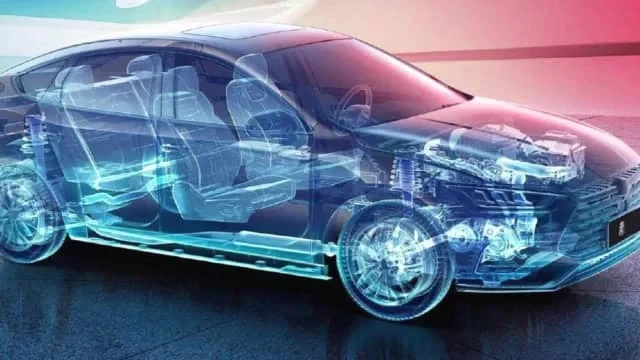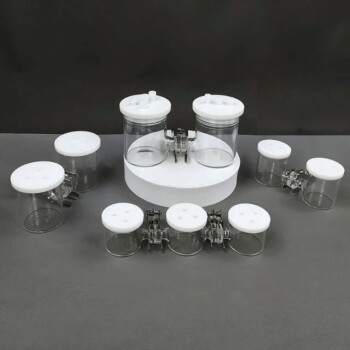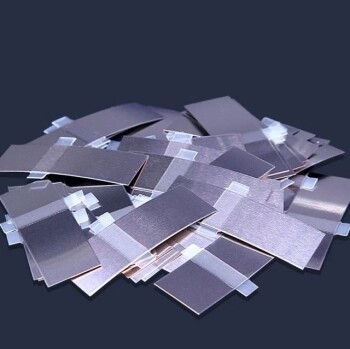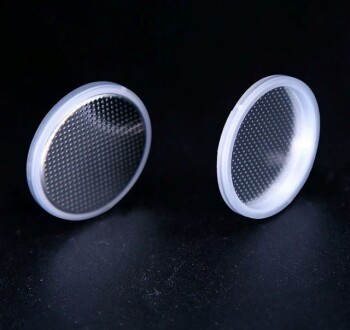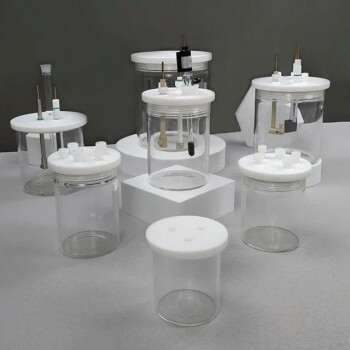Introduction: Importance of electrolytic batteries
Electrolytic batteries are an essential component of modern-day life. They power everything from our smartphones to our cars and homes. Electrolytes are the key to the function of these batteries, as they allow for the flow of current between the anode and cathode. Strong electrolytes, such as sodium chloride and nitric acid, are commonly used in batteries, while weak electrolytes are used in other applications. Primary batteries are disposable, while secondary batteries, such as lead-acid and fuel cells, can be recharged. The development of lithium-ion batteries, with their high energy density and long cycle life, has revolutionized the energy storage industry. The design of electrolytes remains a challenge, but automated discovery and the power of AI are promising tools for advancing this field.
Table of Contents
- Introduction: Importance of electrolytic batteries
- What are Electrolytes? How do they work?
- Components of a battery: anode, cathode, electrolytic solution
- Types of Electrolytes: Strong and Weak
- Commonly Used Electrolytes: Sodium Chloride, Nitric Acid, etc.
- Sodium Chloride
- Nitric Acid
- Other Electrolytes
- Primary vs. Secondary batteries
- Secondary Batteries: Lead-acid and Fuel Cells
- Li-ion batteries and their cathodes
- Challenges and Solutions to Electrolyte Design
- Conclusion: Promising future of electrolytic batteries
What are Electrolytes? How do they work?
Electrolytes are substances that conduct electricity when dissolved in a liquid. They have become a popular solution to the growing energy demands of modern society. Electrolytes play a significant role in the operation of electrolytic batteries, which use chemical reactions to produce electrical energy.
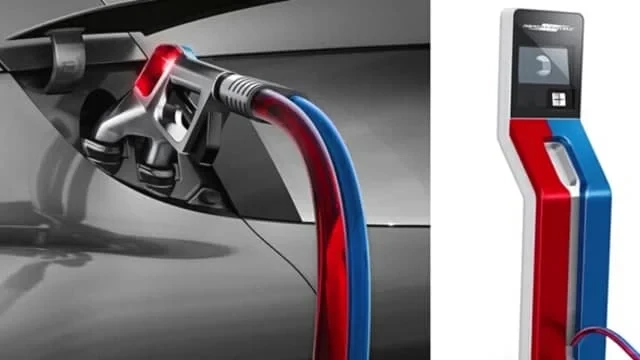
Electrolyte Reactions
Electrolytic batteries have three major components: anode, cathode, and an electrolytic solution. The anode and cathode are electrodes that are submerged in the electrolytic solution and connected externally through a conducting wire. When the electrolyte is dissolved in the solvent, it releases ions. The ions released by the electrolyte react with the anode to release one or more electrons. As electrons accumulate near the anode, they start moving through the wire towards the cathode, which has no or very few electrons. This movement of electrons produces electric current that powers any gadget connected through the wire.
Types of Electrolytes
Depending on the extent to which the electrolyte can ionize, electrolytes may be strong or weak. Strong electrolytes are those compounds that ionize to a great extent in an aqueous solution and conduct strong electric current. Weak electrolytes are those compounds that ionize to very small extent in an aqueous solution and conduct very small amounts of electric current.
Commonly used Electrolytes
Different batteries use different chemical compounds as electrolytes. Some of the commonly used compounds are Sodium Chloride, Nitric Acid, Sulphuric Acid, Sodium Acetate, Chloric acid, etc. For example, lead-acid batteries usually use sulfuric acid to create the intended reaction. Zinc-air batteries rely on oxidizing zinc with oxygen for the reaction. Potassium hydroxide is the electrolyte in common household alkaline batteries. The most common electrolyte in lithium batteries is a lithium salt solution such as lithium hexafluorophosphate (LiPF6).
Conclusion
In summary, electrolytes are substances that conduct electricity when dissolved in a liquid. They play a crucial role in the operation of electrolytic batteries that use chemical reactions to produce electrical energy. Electrolytes are classified into strong and weak depending on their ionization, and different batteries use different chemical compounds as electrolytes. Understanding the role of electrolytes in battery operations is essential to appreciate the science behind electrolytic batteries.
Components of a battery: anode, cathode, electrolytic solution
A battery is an electrochemical device that converts chemical energy into electrical energy. It is made up of three main components: the anode, the cathode, and the electrolytic solution.
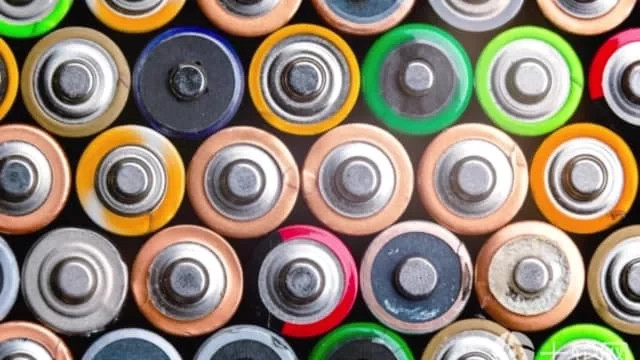
Anode
The anode is the negatively charged electrode in a battery. It is the site of oxidation, where electrons are released to the external circuit during an electrochemical reaction. The anode must be made of a material that is an efficient reducing agent with high coulombic output, good conductivity, and stability. Some of the commonly used anode materials include Zinc and Lithium.
Cathode
The cathode is the positively charged electrode in a battery. It is the site of reduction, where electrons are acquired from the external circuit during an electrochemical reaction. The cathode must be made of a material that is an efficient oxidizing agent with stability when in contact with electrolyte, a useful working voltage, ease of fabrication, and low cost. Some of the commonly used cathode materials include metallic oxides.
Electrolytic Solution
The electrolytic solution is the medium that provides the ion transport mechanism between the cathode and anode of a cell. Electrolytes are often thought of as liquids, such as water or other solvents, with dissolved salts, acids, or alkalis that are required for ionic conduction. However, many batteries including the conventional (AA/AAA/D) batteries contain solid electrolytes that act as ionic conductors at room temperature. The electrolyte should exhibit strong ionic conductivity, no electric conductivity, non-reactivity with electrode materials, properties resistance to temperature fluctuations, safeness in handling, and low cost. Aqueous solutions such as dissolved salts, acids, and alkalis are often used as electrolytes.
In summary, a battery is made up of an anode, cathode, and electrolytic solution. The selection of anode, cathode, and electrolyte materials depends on their desirable properties such as good conductivity, stability, ease of fabrication, low cost, and reaction efficiency. The combination of anode and cathode material should result in the production of a lightweight cell with high voltage and capacity. As research continues into the development of new and more efficient electrolytic batteries, it is clear that they will play an important role in meeting the growing energy demands of the future.
Types of Electrolytes: Strong and Weak
Electrolytic batteries are becoming a popular solution for the growing energy demands of modern society. The effectiveness of these batteries depends on the strength of the electrolyte used. There are two main types of electrolytes: strong and weak.

Strong Electrolytes
Strong electrolytes are highly ionized and conduct electricity very well, making them ideal for use in high-performance batteries. They are composed of soluble ionic salts that dissociate completely in solution, forming ions that can carry current. Common examples of strong electrolytes are acids, bases, and salts such as hydrochloric acid, sodium hydroxide, and sodium chloride.
Weak Electrolytes
Weak electrolytes, on the other hand, are only partially ionized and conduct electricity less efficiently, but can be more stable and longer-lasting. They are composed of ionic compounds that dissociate only partially in solution, forming a mixture of ions and uncharged molecules. Common examples of weak electrolytes are acetic acid and ammonia.
When choosing an electrolyte for an electrolytic battery, manufacturers must consider the specific requirements of the application as well as the desired performance characteristics. Strong electrolytes are ideal for high-performance batteries that require rapid charging and discharging, while weak electrolytes are ideal for applications that require long-term stability and durability.
In summary, strong electrolytes are highly ionized and conduct electricity very well, making them ideal for high-performance batteries. Weak electrolytes are only partially ionized and conduct electricity less efficiently, but can be more stable and longer-lasting. Each type of electrolyte has its own advantages and disadvantages, and manufacturers must carefully consider the specific requirements of their application when choosing an electrolyte for their electrolytic battery.
Commonly Used Electrolytes: Sodium Chloride, Nitric Acid, etc.
Electrolytic batteries are an important solution to the growing energy demands of the world. These batteries use an electrolyte to convert chemical energy into electrical energy through a process called electrolysis. In this process, an electrical current is applied to the electrolyte, which causes a chemical reaction that produces electrons. These electrons are then used to power devices or stored in a battery for later use.
One of the most important components of an electrolytic battery is the electrolyte. Commonly used electrolytes include sodium chloride and nitric acid. Sodium chloride is one of the most commonly used electrolytes in electrolytic batteries. It is a salt that is highly soluble in water and conducts electricity when dissolved. Nitric acid is another commonly used electrolyte. It is a strong acid that is highly soluble in water and conducts electricity when dissolved. Both sodium chloride and nitric acid are used in the production of electrolytic batteries due to their ability to conduct electricity.
Sodium Chloride
Sodium chloride is a common electrolyte used in electrolytic batteries due to its high solubility in water and ability to conduct electricity. When an electrical current is applied to sodium chloride, the chloride ions are oxidized at the anode, resulting in the formation of chlorine gas. At the cathode, the sodium ions are reduced, resulting in the formation of sodium metal. The overall result of the electrolysis is the production of chlorine gas, sodium metal, and aqueous sodium hydroxide (NaOH) solution.
Nitric Acid
Nitric acid is another commonly used electrolyte in electrolytic batteries. It is a strong acid that is highly soluble in water and conducts electricity when dissolved. Nitric acid is used in the production of electrolytic batteries due to its ability to conduct electricity and produce a high voltage. When an electrical current is applied to nitric acid, it causes a chemical reaction that produces electrons. These electrons are then used to power devices or stored in a battery for later use.
Other Electrolytes
There are many other electrolytes that are used in the production of electrolytic batteries. These include hydroxides made from alkaline metals, which are strong electrolytes but do not dissolve in water after a limit. Due to this, their application is restricted to certain situations only. Molten salts such as molten sodium chloride also form electrolytes and conduct electricity. Ionic liquids are molten salts that have a melting point below 100° C and are highly conductive non-aqueous electrolytes. These have many applications in fuel cells and batteries.
In conclusion, the choice of electrolyte used in the production of electrolytic batteries depends on various factors such as solubility, conductivity, and voltage. Sodium chloride and nitric acid are the most commonly used electrolytes due to their ability to conduct electricity and produce a high voltage. However, there are many other electrolytes that are used in the production of electrolytic batteries, and their choice depends on the specific requirements of the battery.
Primary vs. Secondary batteries
Electrolytic batteries are of two types, primary and secondary batteries. Primary batteries are disposable batteries that cannot be recharged. They are commonly used in small devices such as remote controls and flashlights. On the other hand, secondary batteries are rechargeable batteries that can be used multiple times. They are commonly found in larger devices such as electric cars and laptops.
Primary batteries
Primary batteries are single-use batteries that cannot be recharged. They are commonly used in small devices such as remote controls and flashlights. The advantage of primary batteries is that they are more reliable and have a longer shelf life than secondary batteries. However, they are not cost-effective and are not environmentally friendly. Most municipalities classify them as hazardous waste and require separate disposal. About 15 billion primary batteries are thrown away worldwide every year, virtually all ending up in landfills.
Secondary batteries
Secondary batteries are rechargeable batteries that can be used multiple times. They are commonly found in larger devices such as electric cars and laptops. The advantage of secondary batteries is that they can be recharged many times, which makes them more cost-effective and environmentally friendly. Secondary batteries have been gaining market share in the $50 billion battery market and are slowly replacing primary batteries in high-end products.
Lead-acid batteries, nickel-cadmium batteries, nickel-metal hydride batteries, and lithium-ion batteries are commonly used rechargeable batteries. Among these, lithium-ion batteries are the most important for their high voltage, long lifetime, and reliability.
Conclusion
In conclusion, primary and secondary batteries are the two main types of electrolytic batteries. Primary batteries are more reliable and have a longer shelf life, but they are not cost-effective and not environmentally friendly. Secondary batteries can be recharged many times, which makes them more cost-effective and environmentally friendly. The choice between primary and secondary batteries depends on the specific needs of the device or application.
Secondary Batteries: Lead-acid and Fuel Cells
Electrolytic batteries are becoming increasingly important as the demand for energy continues to grow. Secondary batteries, such as lead-acid and fuel cells, are two types of electrolytic batteries that are widely used in various industries.
Lead-Acid Batteries
Lead-acid batteries have been used for over a century and are the most common type of battery used in automobiles. They are inexpensive, reliable, and have a high energy density, making them ideal for applications where weight and size are not critical factors. The battery consists of lead plates immersed in an electrolyte solution of sulfuric acid. During the discharge, the lead plates react with the electrolyte to produce lead sulfate and release electrons that generate electrical energy. The battery can be recharged by reversing the chemical reaction using an external power source to force the flow of electrons in the opposite direction.
Fuel Cells
Fuel cells, on the other hand, are a relatively new technology that has gained popularity in recent years. They convert chemical energy into electrical energy through a chemical reaction between hydrogen and oxygen. Fuel cells are highly efficient and produce no emissions, making them an attractive option for environmentally conscious industries. During the operation of fuel cells, hydrogen is supplied to the anode, and oxygen is supplied to the cathode, where the two gases react to produce water and electrons. The electrons are then sent through an external circuit, generating electrical energy. Fuel cells are different from batteries in that they require a continuous supply of fuel and oxygen to operate.
Overall, secondary batteries, including lead-acid and fuel cells, are viable solutions to the growing energy demands. As technology continues to advance, we can expect further innovation in this field.
Li-ion batteries and their cathodes
Li-ion batteries have gained widespread use due to their high energy density and long cycle life. The cathodes of these batteries play a critical role in determining their performance, with various materials being used for different applications.
Cobalt-based cathodes
Cobalt-based cathodes have been the most commonly used, but their high cost and environmental concerns have led to the exploration of alternative materials.
Alternative cathode materials
Nickel, manganese, and iron-based cathodes have shown promising results in terms of cost, safety, and performance, with some even surpassing the energy density of cobalt-based cathodes.
Challenges
However, challenges remain in terms of stability and durability, and further research is needed to fully optimize the performance of these cathodes.
Overall, electrolytic batteries, particularly Li-ion batteries with alternative cathode materials, hold great potential in meeting the growing energy demands in a sustainable and cost-effective manner.
Challenges and Solutions to Electrolyte Design
Importance of Electrolyte Design
Electrolytic batteries are a promising solution to the growing energy demands. However, the design of the electrolyte plays a crucial role in their performance, efficiency, stability, and safety. Therefore, researchers are exploring various materials and compositions for the electrolyte.
Challenges of Electrolyte Design
One of the major challenges facing the development of electrolytic batteries is the design of the electrolyte. Solid-state electrolytes are less prone to leakage and thermal runaway, but they are expensive and not widely available. Ionic liquids offer high conductivity and stability, but they are also expensive and may have toxic properties. Furthermore, both types of electrolytes present their own unique challenges.
Solutions to Electrolyte Design
To address these challenges, researchers are working on improving the performance of existing electrolytes by modifying their composition and structure. For example, they are developing composite electrolytes that combine the advantages of solid-state electrolytes and ionic liquids. They are also exploring new materials and compositions for the electrolyte, such as polymer electrolytes and hybrid electrolytes. These new materials offer advantages such as low cost, high conductivity, and improved safety.
Advancements in Electrolyte Design
Advancements in electrolyte design have led to the development of new types of electrolytic batteries, such as sodium-ion batteries, magnesium-ion batteries, and lithium-sulfur batteries. These batteries offer advantages such as high energy density, low cost, and improved safety. For example, sodium-ion batteries are a promising alternative to lithium-ion batteries because they use abundant and inexpensive sodium ions instead of lithium ions.
Conclusion
In conclusion, the design of the electrolyte is a crucial factor in the performance, efficiency, stability, and safety of electrolytic batteries. Despite the challenges, advancements in electrolyte design offer promising solutions to the growing energy demands. With continued research and development, electrolytic batteries have the potential to revolutionize the way we generate and store energy.
Conclusion: Promising future of electrolytic batteries
In conclusion, electrolytic batteries have a promising future as a solution to meet the growing energy demands. The development of automated discovery and the power of AI have made it possible to design better electrolytes that can improve battery performance, safety, and lifespan. Li-ion batteries with their cathodes have revolutionized the way we store and use energy. The use of fuel cells and lead-acid batteries has also offered a sustainable alternative to fossil fuel-based energy systems. As we continue to face energy challenges, research and development in electrolytic batteries will be crucial in creating a sustainable and green future.
Related Products
- Thin-Layer Spectral Electrolysis Electrochemical Cell
- Electrolytic Electrochemical Cell for Coating Evaluation
- Multifunctional Electrolytic Electrochemical Cell Water Bath Single Layer Double Layer
- H Type Electrolytic Cell Triple Electrochemical Cell
- Aluminum-Plastic Flexible Packaging Film for Lithium Battery Packaging
Related Articles
- The Future of Electrochemical Electrodes
- Understanding Electrolytic Cells: Conversion of Energy and Applications
- Understanding Quartz Electrolytic Cells: Applications, Mechanisms, and Advantages
- Understanding Flat Corrosion Electrolytic Cells: Applications, Mechanisms, and Prevention Techniques
- Understanding Electrodes and Electrochemical Cells
